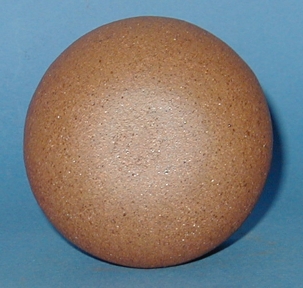 ClayHound Web
- Iroquois
Pottery
ClayHound Web
- Iroquois
PotteryReturn to:
 |
|
||||||||||||||
|
|
|
||||||||||||||
|
Brenda John - Oneida, of the Iroquois Nations |
|||||||||||||||
|
My English name is Brenda John, but the creator knows me as Yakolihwale (she pushes the issue across the floor). I am Oneida, Wolf clan, Mother, Daughter, Sister, Aunt, and potter. I was first introduced to clay in high school when budget cuts eliminated the 2-D art teacher. Painting and drawing classes were no longer available, so I was forced to explore other art forms including ceramics, jewelry and leather tooling. I was talented in art, but it would be another 8 years before I discovered my passion for clay. Following high school, I attended Triton Community College in Illinois studying fine arts. Though I did my assignments, I wasnít motivated to continue the work outside the classroom. I left Triton after a year and later returned to college at UW Green Bay where I earned a Bachelor degree in human development. While there, I took various art classes for my enjoyment, and my sanity. One of those happened to be ceramics because it worked with my schedule, and that was it, I had found my passion. After watching a video on Maria Martinez, the professor asked me about Oneida pottery. At the time, I wasnít familiar with the pottery of my own people, so I began researching Iroquois, Oneida, Seneca, Mohawk, Onondaga and Cayuga pottery. Most of the information I gathered was from the texts of anthropologists, and conversations here and there with members of the Oneida community. By this time, I had already been working with clay for years. Beyond my cerebral knowledge of ceramics, my hands had an understanding of clay. And through trial, error, and repetition, I began making traditional Iroquois style pots. When my grandmothers made pots, they didnít have the luxury of time to decorate as I do. They needed the pots for functional purposes. Their decorations were more geometric and abstract forms. While I am called to do as my grandmothers did, many of my decorations are very literal and detailed. They are reflections of my life as an Iroquois woman today. My traditional style pots are always hand built, never thrown on a potterís wheel, and the bottoms are mostly rounded. Though I researched many different styles of the Iroquois people, my work tends to resemble the Mohawk in style and shape. The form itself comes easily, but the adornment is more difficult, particularly my literal pieces. That kind of Adorning is like making a commitment to the pot, changing it from a piece of pottery to a piece of sculpture that is worthy of its origin and its form. I see my work as a marriage between traditional and contemporary styles, between pottery and sculpture. I am continually evolving and exploring and I still research the traditional pottery, but I also find myself taking more risks with my art. I am very thankful to the creator for this gift. When you hold my pots, they feel good, very comfortable, and natural in your hands. I was taught letting your spirit guide you through life connects you to the past, present and future. When I create a pot, I have that spiritual connection to my grandmothers before me. I feel them watching and guiding me. Sometimes their influence is so strong I feel as if it isnít really me, but someone from the past working through me. My pots grab you and take you through a journey that connects today to life before Europeans came. |
|||||||||||||||
|
|
|||||||||||||||
|
|
|
||||||||||||||

